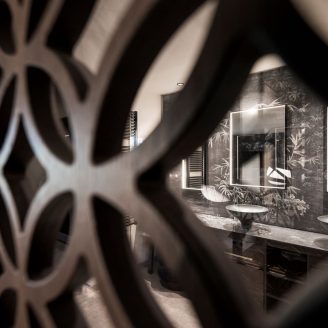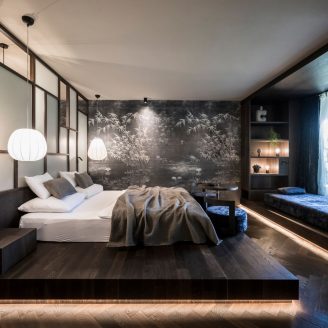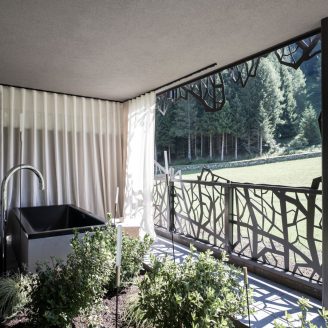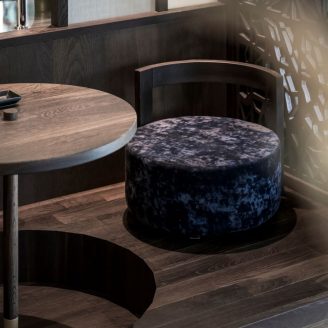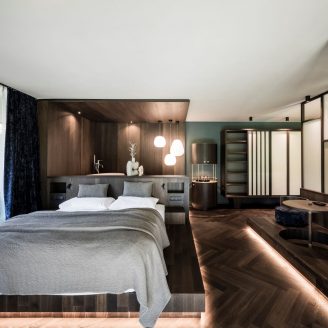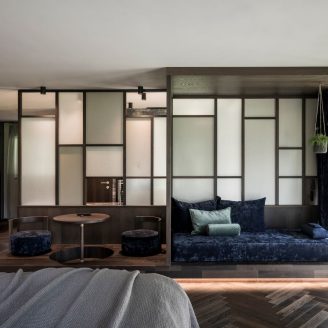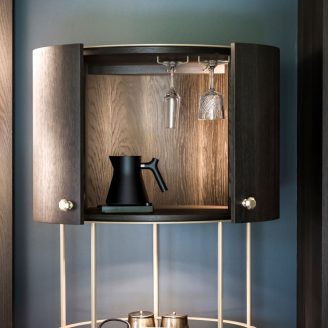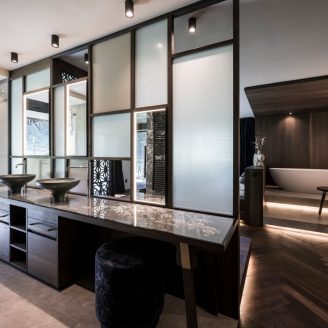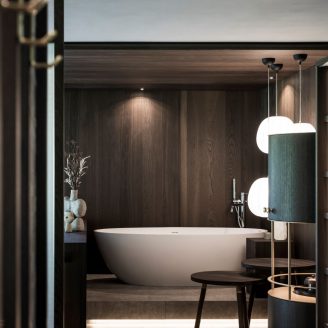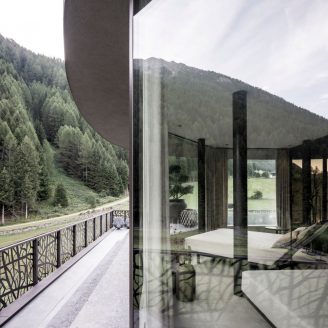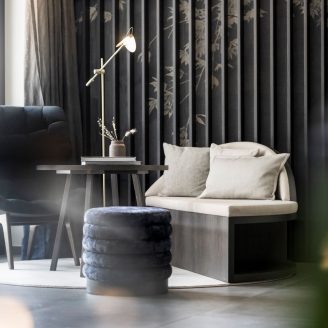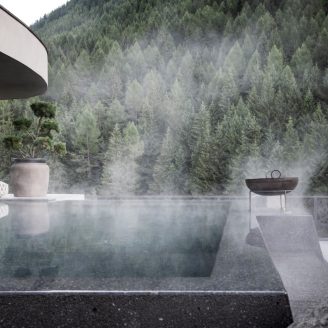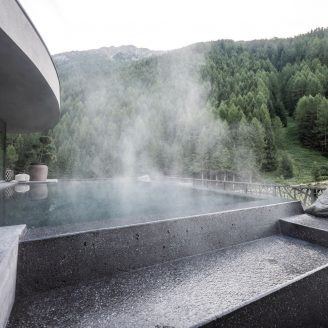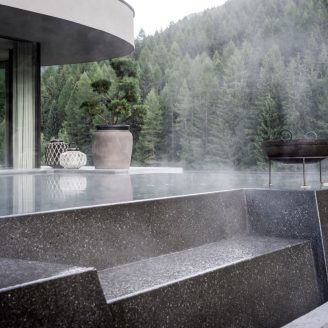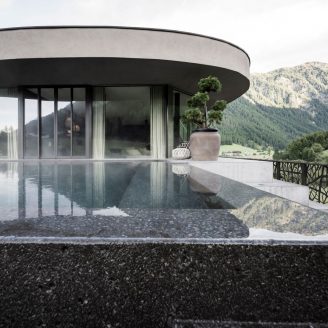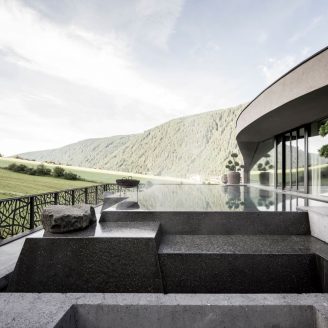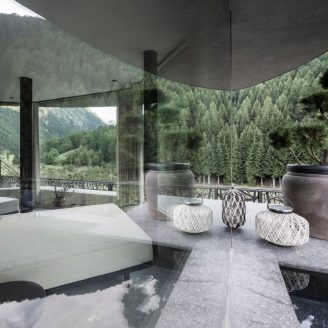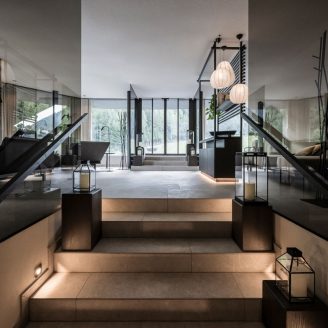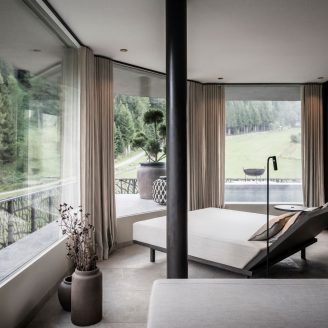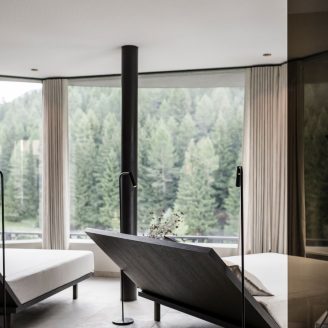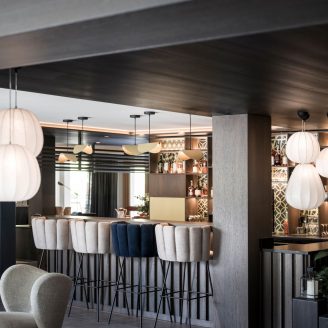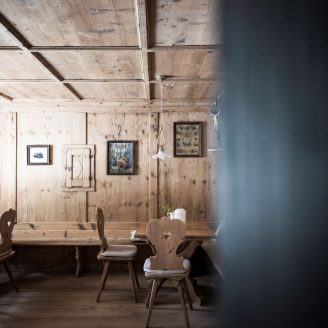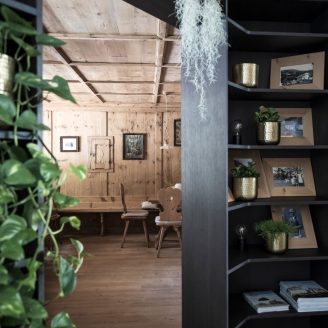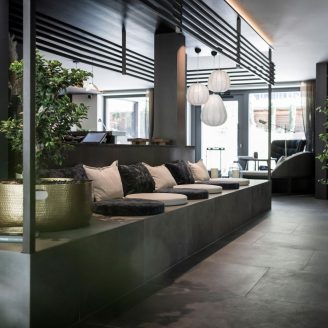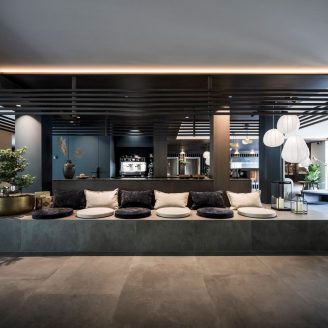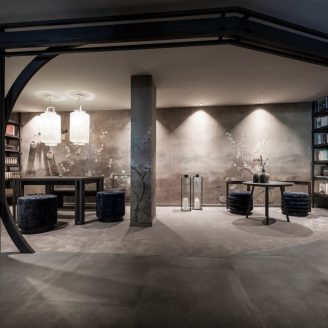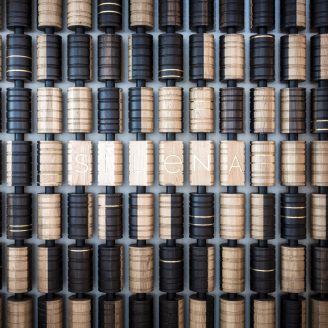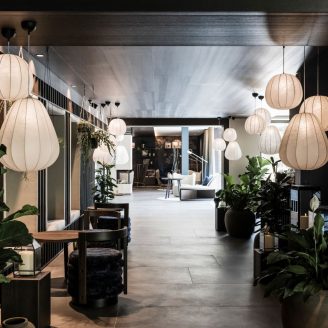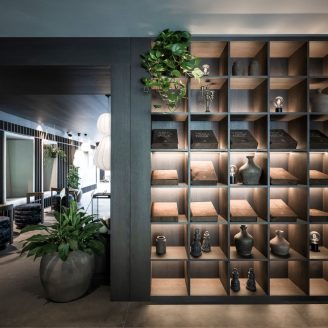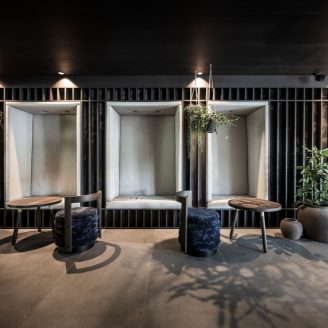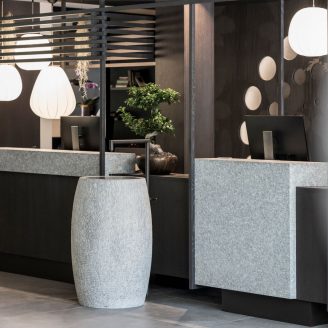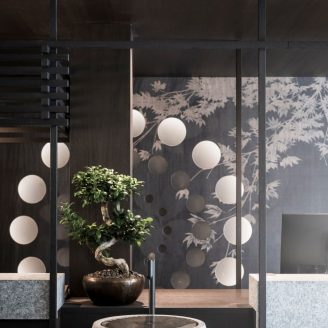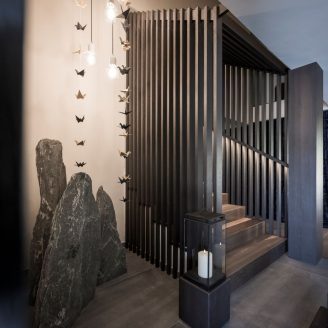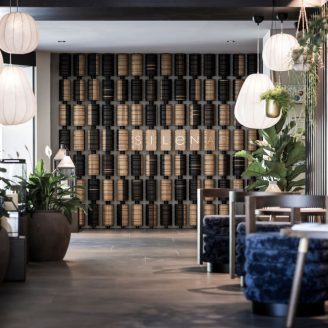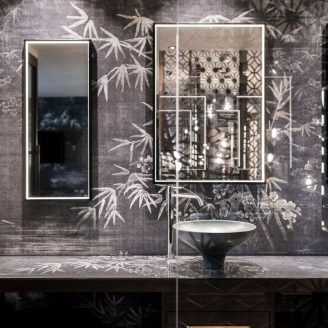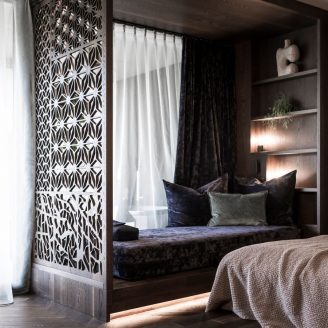Located in Valler Tal, Hotel Silena has been recently renovated by studio noa*, who completed a concept that began five years ago and enriched the structure with a new entrance, six new suites, and an adults’ wellness area, taking inspiration from Asian customs and rituals.
The visitor’s journey already begins in the newly designed entrance, where guests pass through a round wooden portal crafted according to an Asian technique that captures the purity of traditional woodworking. The piece is simply constructed of horizontal and vertical trusses, interlocked to one another at the joints.
To place further importance on the welcome, the walls of the entryway have been painted black using a rough trowel technique with mineral finish: thus transforming the entrance into a sort of tunnel that punctuates the beginning of the holiday.
Particular emphasis has been placed on the moment of arrival: visitors are welcomed into an open space, and the eye is free to meander along the axis that stretches from the northern entrance toward the indoor garden to the south. The stone fountain, newly designed fireplace area, and cosy seating alcoves damper the rigidity of a classic check-in. This intention is emphasized by the placement of the reception desk to the side.
Echoes of Asia are subtle yet omnipresent and reveal themselves in the form of dark wood paired with shades of blue and grey, delicate pine bonsai trees in ceramic pottery, vertical boulders of local stone, and discrete lantern-shaped lights. An entire wall is dedicated to Tibetan prayer wheels while crisp lines create a harmonious atmosphere.
Like an annex to this scenery lies the classic Tyrolean stube: its history, rustic style, and original wood are further highlighted by its direct proximity to the new bar area featuring minimalist tea ceremony platforms.
Dark oak acts as a reference material and fil rouge throughout the building. The surrounding bog landscape that gave the original farmhouse its name (Moar means “marsh” in local dialect) permeates throughout the building and is echoed in its colours and materials.
All custom furniture was made using oak, and it is oak that is used for the floors of the hotel’s six new suites.
A powerful sense of connection to the ground is present in every room, with individual areas delimited by the podiums they each sit on, such as the bed, the meditation corner, and the ceremonial tea table, which can be lowered into the floor and out of sight. This arrangement draws on the Japanese tradition of creating small, well-defined spaces.
The Asian room theme continues out onto the individual terraces, conceived as outdoor rooms: each suite features a small outdoor garden equipped with a bathtub, small flower beds, and curtains, evoking symbolic elements of the culture’s rich origins.
The 30 to 55 square meter suites are characterized by an alluring interplay of light and shadow, of visibility and intimacy. The geometrically patterned wooden room partitions contribute significantly to this, perpetuating the lively play of light that enters through the patterned aluminium panels of the façade.
The separation between the sleeping area and bathroom is intriguing and even illusory at times: inspired by Japanese rice paper walls, noa* created a partition composed partly of opaque glass panels, partly semi-transparentglass, and in some places of open panels, to maintain a relationship between the two spaces and evoke flow in the ambiance.
Two ceramic, tulip-silhouetted sinks are reflected in the vanity’s glass countertop and underlaid wallpaper. While the vanity is located away from the window in the bathroom, the shower is positioned right up against the window, favouring a direct relationship with the open air.
In addition, the building’s façade ensures privacy, transforming the terraces into a semi-private space.
In the new wellness area on the top floor, noa* has designed a retreat and wellness zone reserved for adults and inspired by Japanese Onsen springs. Here there is a relax area, showers for traditional purification rituals, and an open-air pool maintained at a constant 40 degrees.
The pool’s design, with exposed black concrete steps reminiscent of volcanic stone, creates a striking textured mise-en-scène.
In a traditionally alpine place, architecture tells the story of two distant cultures that harmoniously intercept and complete one another.


